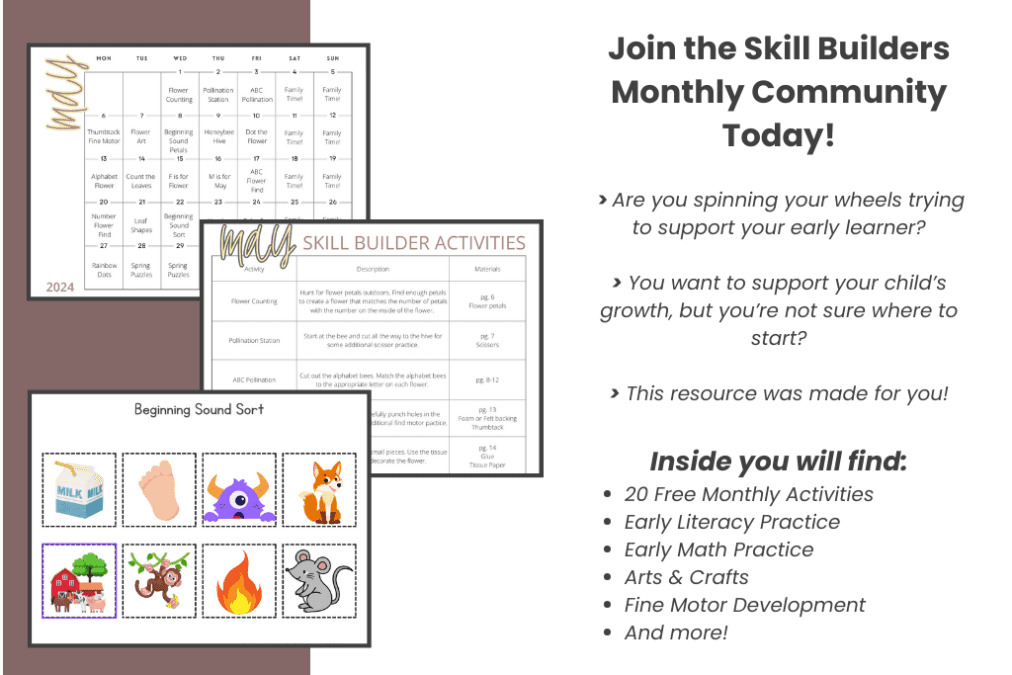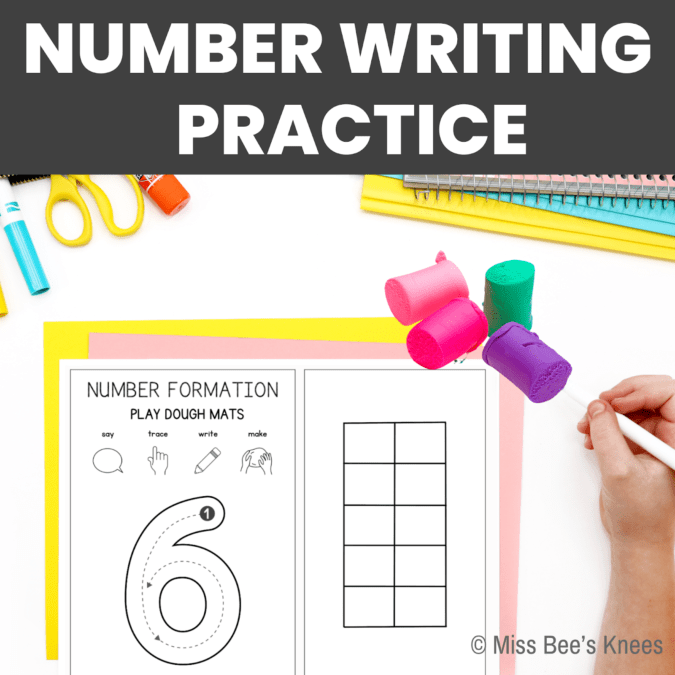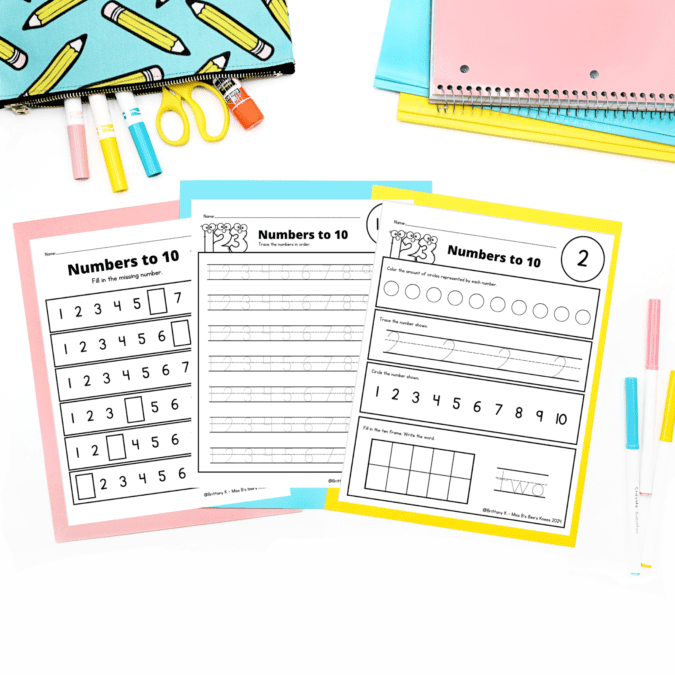As a parent, watching your child struggle with learning essential skills can be challenging. You want to ensure they’re making progress and are ready for school, but sometimes it’s hard to know where to start. The idea of teaching your child to write numbers 1-10 might feel overwhelming, especially when you’re unsure of the best approach. But don’t worry; you’re not alone. Many parents face this same challenge, and the good news is that there are effective strategies to help your child succeed. This blog post will cover five powerful strategies to help your child learn to write numbers 1-10, so you can feel confident in their progress and enjoy the learning journey together. If you’re looking for 20 FREE monthly skill-building activities, join our Skill Builders Community Today!

#1: Number Tracing and Copying
A common myth is that children should start writing numbers on their own right away. Many parents think that a child should be able to look at a number and write it. However, the truth is that tracing and copying are crucial first steps in number writing practice. These activities build muscle memory and fine motor skills, making it easier for children to write numbers independently later on.
Here are two types of activities to look for when incorporating number writing practice into your learning routine:
- Tracing Worksheets: Use learn to write numbers worksheets that have dotted lines for children to trace. This helps them understand the shape and formation of each number.
- Copying Exercises: Once they are comfortable tracing, provide worksheets where they can copy the numbers next to the traced versions. However, copy exercises do not need to be limited to worksheets. Switch it up by incorporating painting, air writing, sensory trays, and more!
Number tracing and copying lay a solid foundation for your child’s handwriting skills, making this strategy essential for mastering number writing.
#2: Use of Manipulatives
Another common mistake is thinking that writing practice should only involve pencil and paper. Instead, incorporating manipulatives can make learning more engaging and effective. Manipulatives are physical objects that children can handle and manipulate to understand mathematical concepts better.
- Sand Paper Number Cards
- Magnetic Numbers
- Play-Dough Numbers
- Unfix Cubes Number Shapes
- Wiki Stix Number Shapes
- Sand Tray Number Writing
- Shaving Cream Number Writing

I once worked with a child who struggled with writing numbers using traditional methods. However, once we introduced play-dough and number cards, their progress was remarkable. They found joy in the tactile experience, which almost always translated into better writing skills.
#3: Guided Practice with Gradual Release
One crucial step for achieving big results is guided practice with gradual release. This method involves starting with direct instruction and gradually giving the child more independence.
- Modeling: Begin by demonstrating how to write each number, explaining each step clearly. For numbers, consider modeling where to start and where to finish when writing specific numbers. Hint: Place a green sticker where you would like them to begin writing, and a red sticker where you would like them to end writing.
- Guided Practice: Work alongside your child, providing support and feedback as they attempt to write the numbers themselves.
- Independent Practice: Gradually reduce your assistance, allowing your child to write numbers on their own.
This strategy builds confidence and competence, ensuring that your child feels supported while developing their writing skills.
#4: Teach Them with a Story
One often overlooked but essential step is incorporating storytelling into number writing practice. Creating stories around numbers can help children visualize and remember them more easily.
- Number Stories: For example, the number 1 can be a tall tree, and the number 2 can be a swan swimming. These visual stories make numbers more relatable and memorable.
- Illustrations: Use illustrations or drawings to accompany the stories, enhancing the visual connection.
By teaching numbers through stories, you make learning fun and engaging, which can significantly improve retention and understanding.
#5: Teach Them With a Song
When children are stuck or unmotivated, turning learning into a musical experience can be incredibly effective. Songs and rhymes can make number writing practice more enjoyable and memorable.
- Number Songs: Find or create songs that include instructions for writing each number. For instance, “The Number Writing Song” can guide children through the strokes needed to form each number.
- Rhythm and Repetition: The rhythm of songs helps reinforce memory, making it easier for children to recall the steps involved in writing each number.
Incorporating music into learning can break down barriers and make the process much more enjoyable for both you and your child.
Start small
In summary, mastering how to write numbers 1-10 is achievable with the right strategies. From number tracing and copying to using manipulatives, guided practice, storytelling, and incorporating songs, these approaches can transform learning into a fun and successful experience. Start with one strategy that resonates most with your child and gradually incorporate others. Start today by making learning engaging, supportive, and consistent.
Download Number Writing Practice Today!

Ready to get started on your child’s number writing journey? Download our Skill Builders Monthly program, a free resource packed with 20 activities each month designed to help your toddler develop essential skills. Click here to access your free activities and give your child the tools they need to succeed when writing numbers 1-10! And don’t forget to follow along for all things early learning on instagram and facebook. I would love to hear from you ♥️ Shoot me a DM to let me know if any of these strategies have worked!





